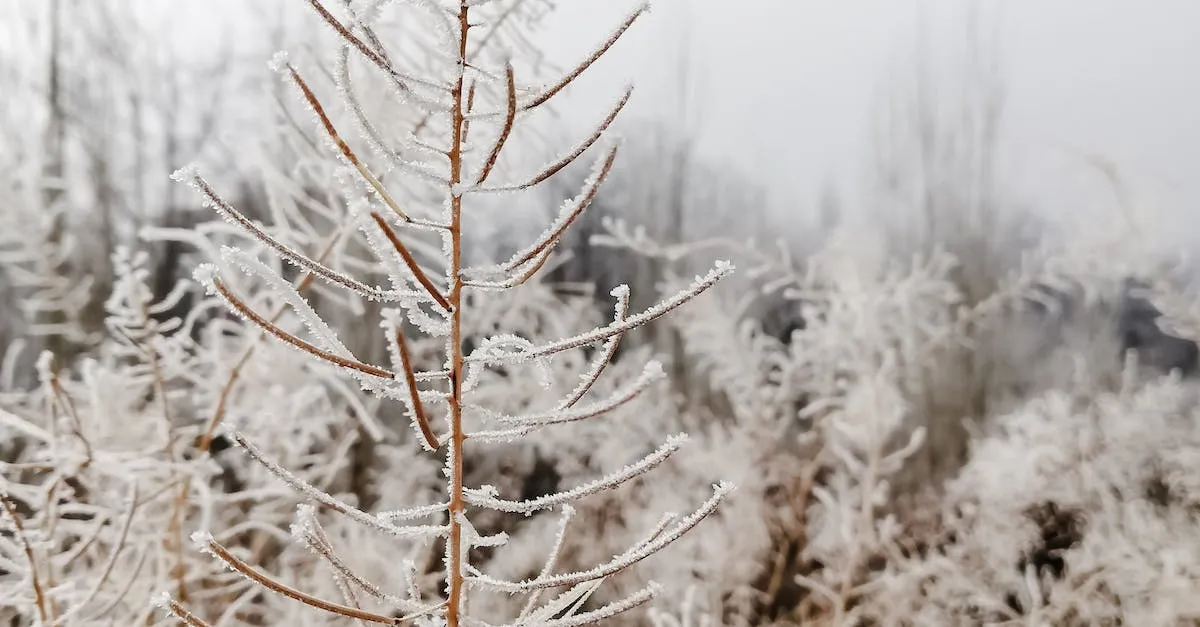Does It Snow In Florida? Examining The Sunshine State’S Rare Cold Weather
With its tropical climate and swaying palms, a Florida snowstorm seems like an impossible weather event. But occasionally, Arctic air masses plunge far enough south to bring frozen precipitation, even to the beaches. Understanding how often Florida sees snow flurries or accumulations can help in planning winter getaways.
In short: Significant snow is extremely rare in Florida, but flakes do fall a few times per decade in the northernmost areas of the state. The rest of Florida essentially never gets measurable snow.
Florida’s Typical Winter Weather Patterns
When people think of Florida, they often envision sunny beaches and warm weather year-round. However, the Sunshine State does experience some changes in temperature during the winter months. Let’s take a closer look at the typical winter weather patterns in Florida.
Overview of seasonal temperatures
Florida’s winter temperatures vary depending on the region. In the northern part of the state, such as Tallahassee, temperatures can dip into the 30s and occasionally even below freezing. Central Florida, including cities like Orlando and Tampa, tends to have milder winters with average temperatures in the 50s and 60s.
The southernmost part of the state, including Miami and the Florida Keys, enjoys the warmest winters, with temperatures often in the 70s and 80s.
Precipitation across the state
While Florida is known for its abundant sunshine, it does receive rainfall during the winter months. On average, Florida receives around 2-3 inches of rainfall per month during winter. However, the amount of precipitation can vary across the state.
The northern part of Florida tends to receive more rainfall compared to the southern regions. This rainfall helps maintain the lush green landscapes that Florida is known for.
The influence of cold fronts
One of the primary factors that bring colder temperatures to Florida during the winter is the passage of cold fronts. These fronts are associated with low-pressure systems that move across the state from the northwest.
As these cold fronts move through, they can bring cooler air, gusty winds, and sometimes even storms. The duration and intensity of these cold fronts can vary, but they generally lead to a temporary drop in temperatures before the warmer weather returns.
It’s important to note that while Florida does experience colder temperatures during the winter, it is still considered mild compared to many other parts of the United States. Snowfall is extremely rare in Florida, especially in the southern regions.
However, there have been a few instances of snowfall in the northern parts of the state, particularly during strong winter storms.
For more information on Florida’s weather patterns, you can visit the Weather Channel or the National Weather Service.
Northern Florida’s Snow Potential
When you think of Florida, you likely imagine sun-soaked beaches, palm trees, and warm weather year-round. However, the Sunshine State is not immune to rare cold weather events that can bring snow to certain parts of the state, particularly in northern Florida.
Let’s take a closer look at the snow potential in this region.
Jacksonville and the Panhandle’s snow records
While snowfall is a rare occurrence in Florida, cities like Jacksonville in the northeast and parts of the Panhandle have experienced snowfall in the past. Jacksonville, being the northernmost major city in the state, has recorded snow flurries on several occasions.
In fact, the city has seen snowfall about 5 times in the past century. However, it’s important to note that these snow events are usually light and do not result in significant accumulation.
In the Panhandle region, which stretches across the northwestern part of the state, snowfall is slightly more common due to its proximity to colder air masses from the Gulf of Mexico. Cities like Tallahassee have experienced snowfall multiple times over the years, although it still remains a relatively rare occurrence.
Snow flurries versus accumulation
When it comes to snowfall in northern Florida, it’s important to understand the difference between snow flurries and accumulation. Snow flurries refer to light, scattered snowfall that often melts upon contact with the ground.
These flurries can create a picturesque winter scene, but they rarely accumulate enough to cause any major disruptions. On the other hand, snow accumulation refers to the build-up of snow on the ground, which can cause more significant impacts to daily life.
It’s worth mentioning that even when snow flurries occur in northern Florida, they usually last for a short period of time before the temperatures rise and the snow melts away. This is due to the region’s typically mild climate.
Elevation impacts on snowfall
Another factor that influences the potential for snowfall in northern Florida is elevation. Higher elevations, such as those found in the northern parts of the state, have a slightly higher chance of seeing snow compared to coastal areas.
This is because colder air tends to sink into lower-lying areas, while higher elevations can trap and retain cool air, creating more favorable conditions for snowfall.
For example, in areas like the Appalachian Mountains in northern Florida, snowfall is more common during winter months. These elevated regions can experience heavier snowfall compared to the surrounding flatlands.
While snow in Florida may be a rare sight, it’s an intriguing phenomenon that showcases the state’s diverse weather patterns. So, if you ever find yourself in northern Florida during a rare snow event, make sure to enjoy the magical experience while it lasts!
Central and Southern Florida Snow
When it comes to snow, central and southern Florida are not typically the first places that come to mind. Known for its sunny beaches and warm climate, the Sunshine State rarely experiences snowfall. However, there have been a few rare instances where snowflakes have graced the skies of Florida, much to the surprise and delight of its residents.
Extreme rarity of snowfalls
Snowfall in central and southern Florida is an extreme rarity. The state’s unique geographical location and warm climate make it highly unlikely for snow to occur. The warm Gulf Stream currents prevent most cold air masses from reaching Florida, resulting in mild winters with temperatures rarely dipping below freezing.
According to the National Weather Service, snowfall in Florida is so uncommon that it has only been recorded a handful of times in the state’s history. These rare snow events are often met with excitement and curiosity, as residents and visitors marvel at the unusual sight of snowflakes falling in a place known for its year-round warmth.
A few freak snow events
Although rare, there have been a few instances where central and southern Florida experienced snowfall. One notable event occurred in January 1977 when a powerful cold front swept across the state, bringing freezing temperatures and snow to areas like Miami and Fort Lauderdale.
It was a surreal sight to see palm trees covered in a thin blanket of white.
Another memorable snow event took place in December 1989, when flurries were reported in parts of central Florida, including Orlando. The snowfall lasted for only a brief period but left a lasting impression on the residents, who eagerly captured the magical moment on camera.
Cold snaps but no snow
While snowfall may be a rare occurrence, cold snaps do occasionally make their way to central and southern Florida. These cold snaps bring chilly temperatures and frosty conditions, but they typically do not result in snow.
Instead, residents may wake up to frost-covered lawns and cars, a rare sight in a state known for its tropical climate.
It is important to note that the lack of snow in central and southern Florida does not detract from the state’s many other attractions. From its beautiful beaches to its vibrant cities and diverse wildlife, Florida offers a wealth of experiences that make it a top destination for tourists and locals alike, regardless of whether it snows or not.
For more information on Florida’s weather patterns and historical snow events, you can visit the National Weather Service website.
Historic Florida Snowstorms
While Florida is known for its warm and sunny weather, it has experienced a few rare instances of snowfall throughout its history. These historic snowstorms have left a lasting impact on the state and its residents.
Let’s take a closer look at some of the most significant snow events in Florida’s history.
The Great Florida Snow of 1899
One of the most memorable snowstorms in Florida’s history occurred in 1899, when snowflakes fell as far south as Miami. This rare event left residents in awe and created a sense of excitement throughout the state.
The Great Florida Snow of 1899 is still talked about today, as it remains the most widespread snow event in Florida’s history.
The snowfall was reported in various cities, including Orlando, Tampa, and Jacksonville. In fact, Jacksonville received around 2 inches of snow, which is quite substantial for a state known for its warm climate.
Residents took advantage of the rare opportunity to build snowmen, have snowball fights, and simply enjoy the unique experience.
1976 Snow Event in South Florida
Another notable snow event occurred in South Florida in 1976. This unexpected snowfall brought joy to many residents who had never experienced snow before. Children and adults alike were seen playing in the snow, making snow angels, and even attempting to build miniature snow forts.
The 1976 snow event was particularly significant because it marked the first time in recorded history that snow had fallen in the Miami area. While the snowflakes quickly melted upon touching the ground, the event left a lasting impression on the local community.
Impact of Snow on Florida Wildlife
Although snow in Florida may be a rare occurrence, it can have a significant impact on the state’s wildlife. Many animals, such as birds and reptiles, are not adapted to cold temperatures and may struggle to find food and shelter during snowstorms.
Additionally, snow can disrupt the normal behaviors of animals and force them to seek alternative sources of food and water. For example, birds that typically feed on insects may have a difficult time finding their usual food sources during a snowfall.
This can lead to changes in migration patterns and a temporary disruption in the ecosystem.
It’s important for residents and visitors to be mindful of the potential effects of snow on Florida’s wildlife and take steps to minimize any negative impacts. This can include providing food and shelter for birds and other animals, as well as avoiding unnecessary disturbance during times of inclement weather.
While snow in Florida may be a rare and fleeting phenomenon, it adds to the state’s unique charm and provides a memorable experience for those fortunate enough to witness it. So, the next time you find yourself in the Sunshine State during a snow event, embrace the magic and create lasting memories of this unusual occurrence.
Future Outlook for Florida Snow
Climate change projections
While Florida is known for its warm and sunny weather, climate change projections suggest that the state may experience changes in its weather patterns in the future. According to the Environmental Protection Agency, rising global temperatures could lead to shifts in precipitation patterns, potentially increasing the likelihood of snowfall in regions where it is currently uncommon.
However, it’s important to note that climate change is a complex issue with various factors at play. While some models predict an increase in snowfall events in Florida, others suggest that the overall snowfall may decrease due to changing atmospheric conditions.
Scientists are continuing to study and monitor these changes to better understand their long-term impacts on Florida’s weather.
Increased winter weather variability
Even without the influence of climate change, Florida has already experienced instances of rare winter weather, including snowfall. This can be attributed to increased variability in winter weather patterns.
The state’s geographical location and proximity to bodies of water contribute to this variability, as cold air masses from the north occasionally collide with warm, moist air from the Gulf of Mexico.
These weather systems can result in brief periods of snowfall or freezing temperatures in parts of Florida. While these events are relatively rare, they do occur from time to time, surprising both residents and visitors alike.
It’s important for Floridians to stay informed and prepared for such weather events, as they can impact travel and daily routines.
Conclusion
While a few flakes may occasionally fall across the northern border, measurable snow remains an extremely rare phenomenon across the majority of sunny Florida. But historically unprecedented cold snaps could potentially bring wintry surprises deep into the peninsula as climate patterns shift in complex ways.








